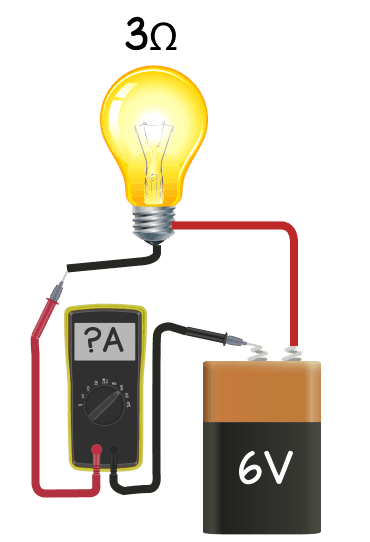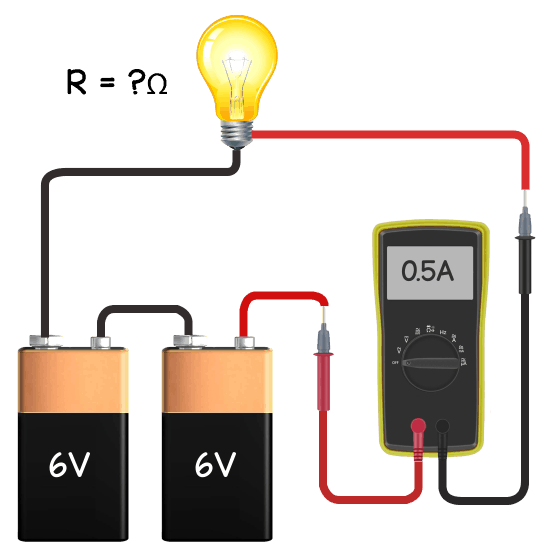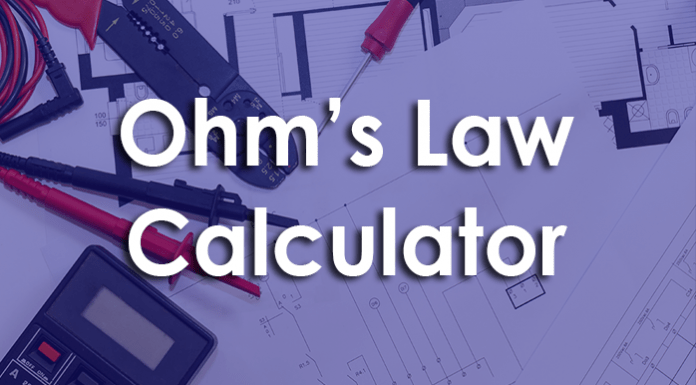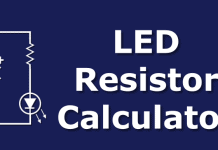Ohm’s Law Calculator. Below are three calculators used for Ohm’s law to calculate the Current, Voltage and Resistance. There are basic examples below this for how to use the calculator.
| Voltage | Volts | |
| Resistance | Ohms | |
| Current | Amps |
| Resistance | Ohms | |
| Current | Amps | |
| Voltage | Volts |
| Voltage | Volts | |
| Current | Amps | |
| Resistance | Ohms |
Examples of how to use the calculator
Current

In this circuit we have a 3Ω resistive lamp connected to a 6V battery. The current in the circuit is unknown. Find the current.
Using ohm’s triangle, we find the formula:
Current (I) = Voltage (V) ÷ Resistance (R)
Current = 6V ÷ 3Ω
Answer is 2A
Voltage

In this circuit we have a 3Ω resistor connected to a battery with an unknown voltage. The current in the circuit is 2A. Find the voltage.
Using ohm’s triangle, we find the formula:
Voltage (V) = Current (I) x Resistance (R)
Voltage = 2A x 3Ω
Answer is 6V
Resistance

In this circuit we have a resistive lamp connected to two 6V batteries, which are wired in series, providing 12V to the circuit. The current in the circuit is 0.5A. Find the resistance.
Using ohm’s triangle, we find the formula:
Resistance (R) = Voltage (V) ÷ Current (I)
Resistance = 12V ÷ 0.5A
Answer is 24Ω






















[…] If you want to check your answers the you can use our FREE Ohm’s Law Calculator. Click here. […]
Very useful in my situation, thank you.
Is there a difference between a series circuit and a parallel circuit when doing Ohm’s Law?
very good
thanks
Thanks 😊 sir 🙏 very respect